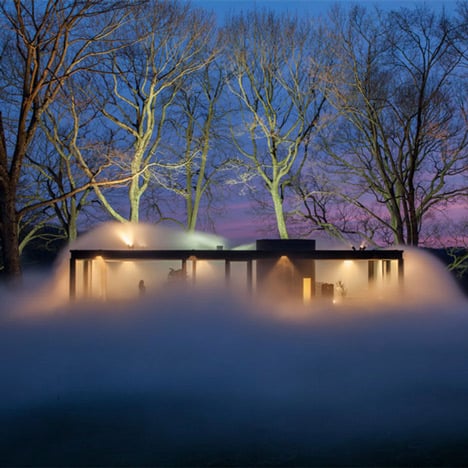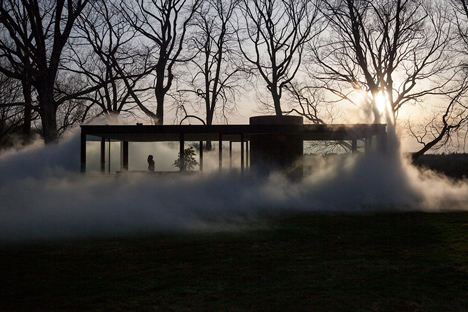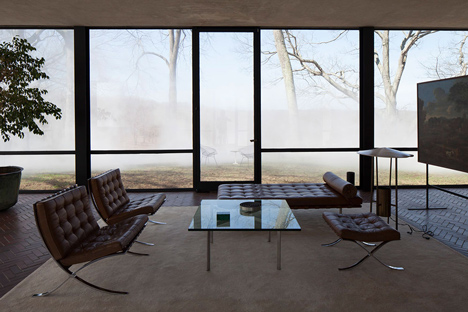Fujiko Nakaya hides Philip Johnson's Glass House in vaporous fog
Philip Johnson's iconic Glass House is set to vanish as part of an installation by Japanese artist Fujiko Nakaya that will see the building temporarily engulfed in dense clouds of mist.
For 10 minutes every hour, water will be pumped at high pressure through 600 nozzles to create a temporary vaporous fog around the transparent structure, which was completed by the late Postmodern architect at his Connecticut home in 1949 and became one of his most famous works.

Designed as a guest house, Johnson created the Glass House deliberately without curtains, affording no privacy to its occupants. He once stated that "guests are like fish, they should only last three days at most".
Fujiko Nakaya's work, entitled Veil, will counteract this intention, creating short periods of isolation for the structure and its occupants before the mist dissipates and the building remerges with its transparency restored.

Henry Urbach, director of the Glass House, says the project captures the "balance of opposites" that is "evident throughout the Glass House campus".
"With Nakaya's temporary installation, we carry this sensibility to its endpoint while allowing the unique magic of the Glass House – the dream of transparency, an architecture that vanishes – to return again and again as the fog rises and falls," he explained.

Nakaya, who is credited with creating the world's first fog sculpture during the 1970 World Expo in Osaka, is best known for creating mist installations at venues such as the Guggenheim Museum in Bilbao and the Grand Palais in Paris.
"Fog responds constantly to its own surroundings, revealing and concealing the features of the environment," said the artist. "Fog makes visible things become invisible and invisible things, like wind, become visible."
The installation marks the 65th anniversary of the pavilion's construction. It opens tomorrow and will be accessible to the public until 30 November, alongside a programme of accompanying events.
Photography is by Richard Barnes.